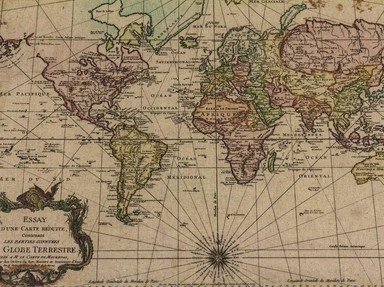Quiz Answer Key and Fun Facts
1. Founded by Phoenicians around 7th century BC, Lixus later became part of the Carthaginian Empire. Thought to be where the Garden of Hesperides stood, Hercules reputedly set out in his quest for the Golden Apples. Which country is Lixus located in?
2. Initially founded by the Phoenicians, Tipaza was subsequently occupied and built on three hills facing the sea by the Romans. Later, three ancient churches (now in ruins) were built on the hills. What country is Tipaza located in?
3. A monumental masterpiece of King Herod the Great, this port city was constructed with two long breakwaters. It was also here that the first Jewish-Roman War started after the Greeks angered the Jews by sacrificing birds in front of a synagogue. What was this port city?
4. Aggersborg was a Viking ring castle that was built in 981 AD by King Harold Bluetooth. Situated on the Limfjorden waterway, this allowed Aggerborg to be easily accessible by ships. What country is Aggersborg located in?
5. Legends depict that Knossos Palace was constructed by King Minos, with its seemingly maze-like rooms and walkways. A fearsome creature known as the Minotaur guarded its premises. Name the country Knossos Palace was located in!
6. Emerging out of the Indus Valley Civilisation was a city founded sometime around 3000 BC (earliest estimate). With a total of 224 hectares, it was the largest ever found in India. Situated on the now dry Saraswati River, what city was mentioned?
7. L'Anse aux Meadows was a Norse village built in the New World before the expeditions of Christopher Columbus. Built around 1000 years ago, possibly as a colony by Leif Erickson, which country was L'Anse aux Meadows located in?
8. Located on the island of Kyûshû, this site dates back to the Yayoi Period (400 BC - 250 AD). It was an important cultural asset of Japan. It was claimed to be the capital of Yamatai, as written in ancient Chinese texts. What site am I describing?
9. The ruins of the 13th century castle built by Richard of Cornwall stood on jagged cliffs looming high above the sea. But some 500 years earlier, the site was purported to be the birthplace of King Arthur. What castle is mentioned?
10. Constructed by Emperor Vespasian in year 72 AD, the Colosseum was built where Nero's palace, the Domus Aurea, once stood. After his death in 79 AD, it was completed in 80 AD by his son, Titus. Where is Colosseum located?
Source: Author
knightmyst
This quiz was reviewed by FunTrivia editor
Pagiedamon before going online.
Any errors found in FunTrivia content are routinely corrected through our feedback system.
